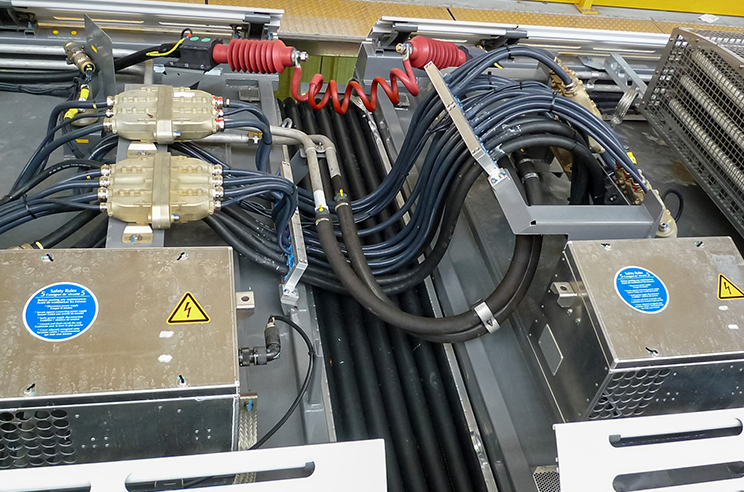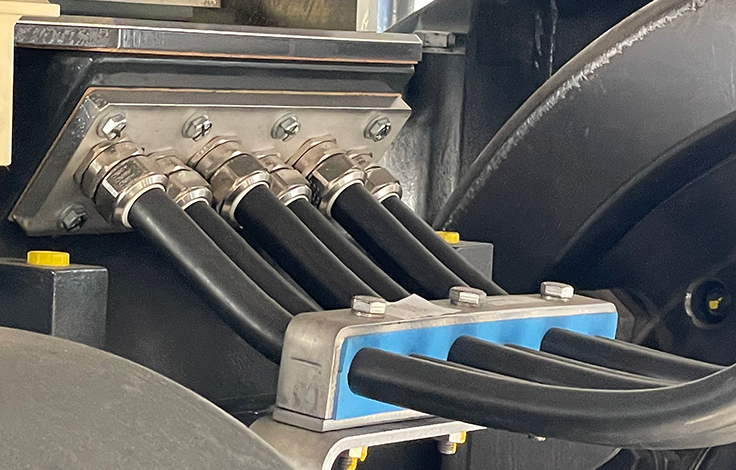
Efficient Cable Management in Rolling Stock:
Bogie systems and jumper cables are extra sensitive areas where inadequate cable retention quickly could cause pre-mature wear of cables. Industry engineered solutions are preferred over general solutions considering the constant movements and vibrations paired with the harsh environment on the undercarriage and on the roof-top of the railway vehicle.
A well-engineered cable retention system should:
- Provide consistent and predictable strain relief
- Minimize the risk of electric discontinuity
- Provide effective clamping at varying temperature and over time
- Protect the cable sheath from wear while clamped and during motion
- Withstand vibration and dynamic movements without fatigue
- Be openable for ease of service and maintenance
- Accommodate cables of various brands, not tied to a specific cable supplier

The Importance of Cable Clamps:
The most obvious aspect of cable clamps or a cable retention system is to provide consistent strain relief over time. As the train set travels along the rail through curves and slopes, the rail cars next to each other will see angular differences pulling and bending cables. The cable retention system must be able to withstand those dynamic movements over the service life of the rolling stock and ensure that cables are kept in place. To validate the life expectancy of a cable retention system, advanced test equipment is required that can simulate these movements in a realistic way. The cable retention system will be approved only when there is no electric discontinuity, no cable failure or failure of the cable retention system itself and no significant cable displacement.

Gentle Yet Firm Cable Clamps:
Different plastics such as polyamide and polypropylene are common materials used in cable clamps and cable retention systems. The Roxtec cable retention system uses soft EPDM rubber with a relatively low shore A value, which is gentle to the cable sheath and provides high pull-out force. The retention modules which come in lengths of 30 mm and 60 mm are suitable for critical cable retention applications, where the 60 mm system provides the highest pull-out force and the 30 mm system the lightest overall weight.
The expected service life of rolling stock is at least 25 years, and the cost of maintenance over this period is often estimated to reach the rolling stock investment cost. Hence, cable management solutions that reduce the need for maintenance have a significant impact on the total lifecycle cost.

